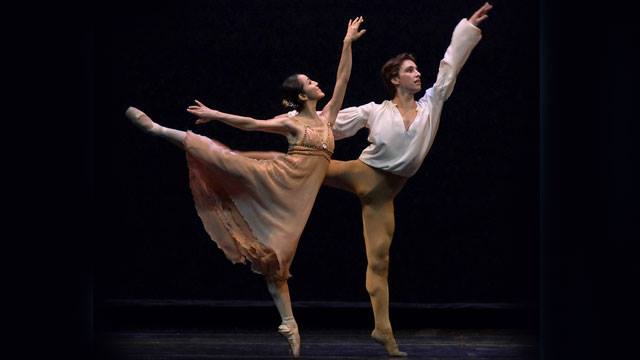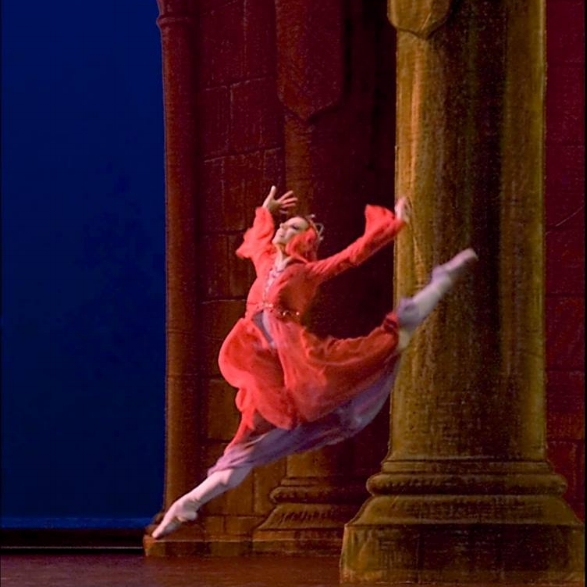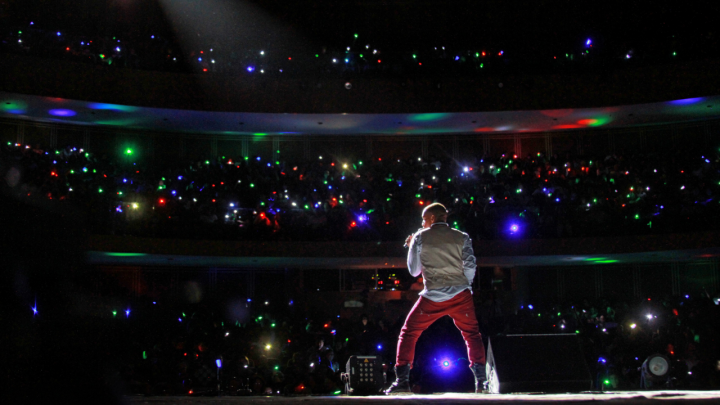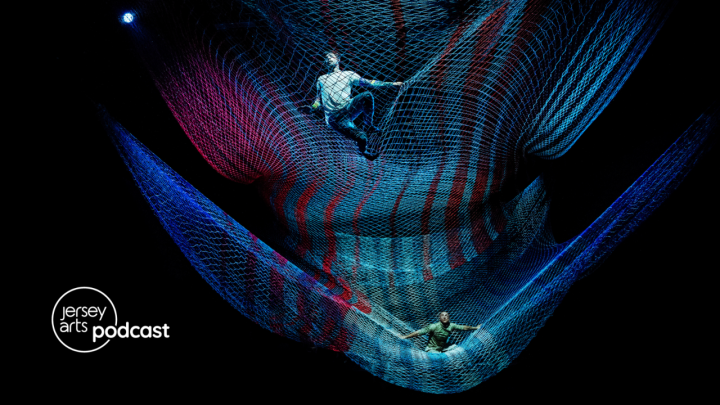Poetry without Words: NJ Ballet Presents a Shakespeare Evening

On Saturday evening at the Bergen Performing Arts Center in Englewood, New Jersey Ballet will present its “Shakespeare Evening,” a performance of two one-act ballets: "Romeo & Juliet" and "Macbeth."
Yup, you read that right. New Jersey Ballet will perform two classic Shakespeare plays as one-act ballets. I’ve always been kind of fascinated at the number of Shakespeare plays that have been turned into ballets. I mean, when you think about Shakespeare, the first things that come to mind are words, poetry and speech. Yet ballet is all about communicating without words. Can you convey the essence of “To be or not to be” or “It is the east and Juliet is the sun” through music and movement alone?
A great number of choreographers have said, “yes!” to that question. There are innumerable ballets of Shakespeare’s "Romeo and Juliet" and "A Midsummer Night’s Dream."Those two are the most common and famous, with brilliant musical scores to match – but there are also ballets of "The Taming of the Shrew," "The Tempest," "Othello," etc. But perhaps it is because those stories of Shakespeare are so timeless and so well known that they make wonderful ballets. I mean, you don’t see many ballets of "Troilus and Cressida," do you? (OK, so I did a little research, and it turns out that there is at least one dance adaptation of T&C – Paul Taylor choreographed a version in 2006. But legendary New York Times dance critic Alastair Macaulay said, “alas, it’s one of his sillier works.”)
This idea of adapting Shakespeare to ballet is not new – there was an "Anthony and Cleopatra" ballet in the mid-19th century and several other play-to-ballet adaptations in the 19th century.
But I think there’s something that appeals to choreographers about translating the lyricism of the Bard’s words to dance. It’s simultaneously a challenge, and yet it’s also what ballet does. Dance often conveys complex emotions through movement and imagery. And if a picture is worth a thousand words, surely a ballet can bring new meaning to these centuries-old stories.

"Romeo & Juliet"
"Romeo & Juliet"
The first work on the program is a one-act adaptation of "Romeo & Juliet," here told by the Nurse and the Friar. This ballet first premiered at the Aspen Summer Festival in 1986, though since expanded.
In Renaissance Verona, two prominent families – the Montagues and the Capulets (of course) – are engaged in a bloody feud. (Spoiler alert! It ends badly for just about everyone.) To help with the abbreviated adaptation of the original play, in this ballet, Juliet’s nurse and Friar Lawrence guide us through the story. Seated on a bench at the side of the stage, they tell the story retrospectively, as a series of fragmentary recollections.
As you probably remember from freshman year English class, the trouble begins when Romeo and his friends sneak into the Capulets’ party. He and Juliet meet and fall in love. Later that night, Romeo goes to see Juliet in the Capulets’ garden and they are later married in secret by Friar Lawrence. But just after that, Tybalt (a Capulet), challenges Romeo to a duel. Tybalt kills Romeo’s friend Mercutio and Romeo kills Tybalt. Now that he’s wanted for murder, Romeo flees Verona. Friar Lawrence gives Juliet a potion to make it look like she’s dead. The plan is that once Juliet is laid in her tomb, Romeo will come as she awakens and both will run off together. But even the best laid plans go awry and, due to some bad timing and a missed message, both Romeo and Juliet end up dead.
"Macbeth"
After intermission, we continue our recollection of high school English classes with a one-act version of "Macbeth," which takes place in medieval Scotland. This ballet is based in part on a production created by Vladimir Vasiliev for the Bolshoi.
Macbeth is a general in King Duncan’s army. He meets with three witches who tell him he will become King of Scotland, but not without bloodshed. Macbeth writes a letter to his wife, Lady Macbeth, to tell her of the prediction. At home in her castle, Lady Macbeth watches as three actors perform a play in which a Queen betrays a King ‒ he finds out and kills her lover. Out of revenge, the Queen kills the King. (Don’t blame your English teacher if this “play within a play” thing doesn’t ring a bell – it’s been added for the ballet.) Macbeth’s letter and the play inspire Lady Macbeth to make a plan. She urges her husband to murder Duncan and assume the throne at once. He does, but the guilt and horror push Macbeth into madness. In the end, the witches see to it that he falls victim to his own ambition.
New Jersey Ballet
For more than half a century, New Jersey Ballet has thrilled audiences from Bergen to Cape May with top quality professional ballet and has given hundreds of thousands of adults and children their first introduction to ballet and inspired in many a lifelong love of the arts. During its 26-week season, the ballet company performs a variety of works ranging from classical to contemporary to jazz ballet at 10 venues throughout the state.
Luckily for you, this performance is staying close to home at the Bergen Performing Arts Center (and here is where I fondly remember seeing ballet as a kid there when it was the John Harms Center.)
The Details
New Jersey Ballet performs its “Shakespeare Evening” on Saturday, April 18 at 8:00 p.m. at the Bergen Performing Arts Center, located at 30 North Van Brundt Street in Englewood, NJ 07631. Tickets are $29, $39 and $49 and can be purchased at bergenpac.org or 201.227.1030. For more information on New Jersey Ballet, visit njballet.org. The performance is sponsored by Wilmington Trust.





